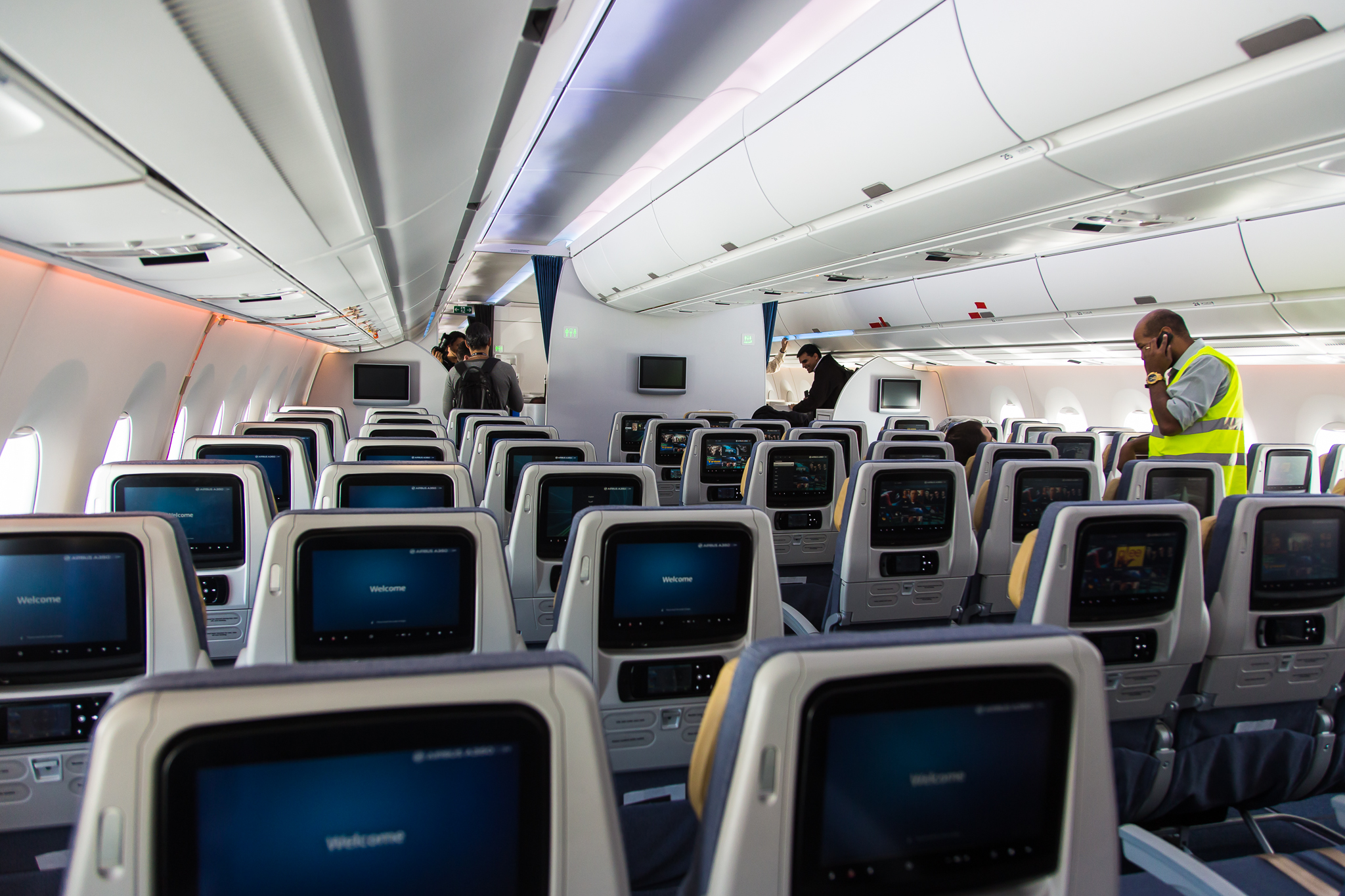I would like to start off with a shout out to 17-year-old Raymond Wang of Vancouver for winning the top prize at the Intel International Science and Engineering Fair (ISEF), the Gordon E. Moore Award plus $75,000. Normally, I would just read the accomplishments of the youth science fair with passing interest, but this year, I fervently hope that Wang's winning entry will be adopted and implemented soon. Wang won the top prize by redesigning the airflow of passenger aircraft cabins, specifically to redirect airflow from top to bottom that will help drive airborne contaminants away from fellow passengers.
According to the June 13, 2015 Science News (SN) article "Teen wins big for pollution control at Intel ISEF"; "His adaption would send the air downward, reducing the number of germs inhaled by passengers by 98 percent, according to Wang's calculations. Also, the deflector should almost triple the amount of fresh air available to passengers."
HUZZAH!
I hope this highly practical engineering solution will soon improve my traveling experience. It has also gotten me thinking about airline travel as a packaging issue. Considering my profession, I'm surprised that I had not thought of the issue of airline passengers through my packaging lens. I am sure most of us that fly regularly (especially my big and tall friends) are very aware that seat spacing in coach has been compressed over the years which allow planes to carry more seats and thus more passengers. However, there is much more to consider when packaging passengers in an aircraft.
The first hurdle, not yet addressed or resolved, is that the seats are not sized for the passengers in neither first class nor coach; every seat space is the same regardless of the size of the passenger. In my profession, that is like asking Amazon to ship you a refrigerator or a coffee mug in a box sized for a microwave. This doesn't make sense from a packaging or logistics perspective. This single size constraint is not good for either the comfort or safety of the passengers who fall outside the fairly narrow space allotted. To drive greater space efficiency, I have recently seen an idea floated about the potential for stand-up 'seating' on some shorter haul aircraft. Unless they drastically redesign the shape of the plane from a slight oval to a much exaggerated oval, the airline will be just exchanging inadequate legroom for inadequate headroom.
The first hurdle, not yet addressed or resolved, is that the seats are not sized for the passengers in neither first class nor coach; every seat space is the same regardless of the size of the passenger. In my profession, that is like asking Amazon to ship you a refrigerator or a coffee mug in a box sized for a microwave. This doesn't make sense from a packaging or logistics perspective. This single size constraint is not good for either the comfort or safety of the passengers who fall outside the fairly narrow space allotted. To drive greater space efficiency, I have recently seen an idea floated about the potential for stand-up 'seating' on some shorter haul aircraft. Unless they drastically redesign the shape of the plane from a slight oval to a much exaggerated oval, the airline will be just exchanging inadequate legroom for inadequate headroom.
Wang's design solution got me thinking about other aspects of packaging our fellow passengers. The aircraft is a classic modified atmosphere package (MAP); in this case controlling pressure and gas mix. Modified atmospheres are often employed to increase food safety (inhibit bacterial or fungal growth) and prolong shelf life (control water vapor). Depending on the product being packaged, the contents may be susceptible to various airborne constituents; oxygen is often purged, nitrogen is often flushed in. To continue the parallel and relevance of food safety, a food manufacturer would not and could not knowingly allow a contaminated product to be packaged alongside like items for fear of contaminating the entire package, but except in the case of the recent Ebola outbreak, this has been a non-issue for airlines.
With the advent of Wang's new airflow redirection and the impact on passenger cross contamination safety, I encourage all airlines to retrofit current aircraft to include Wang's air deflector. In light of some of the recent worldwide virus outbreaks (the cover story in the same issue of SN is the new threat of chikungunya virus), this invention should serve as a minimum standard for passenger safety and serve as a wake-up call to Boeing, Airbus and others to address passenger cross contamination in new and even more effective ways.
 By Eric Carlson, CPP
By Eric Carlson, CPP
www.sciencenews.org || https://www.societyforscience.org || Twitter: @ericpkg

No comments:
Post a Comment
In order to maintain the integrity of the blog and its content, all comments are moderated. We work to review and approve comments as quickly as possible, but please do not resubmit your comment if it does not appear right away.